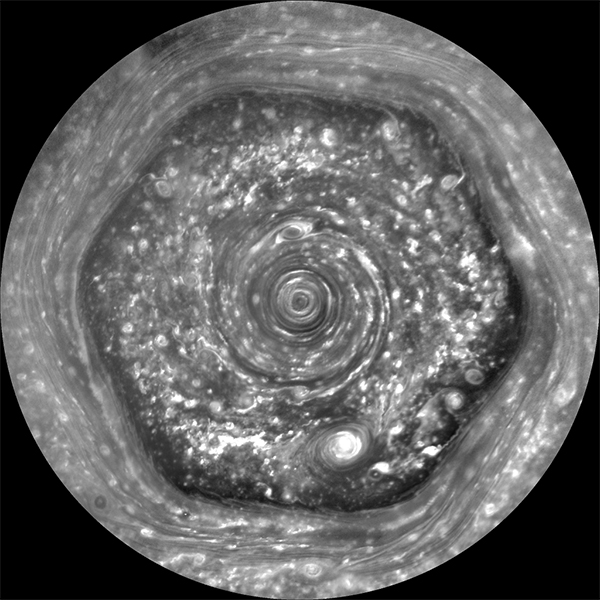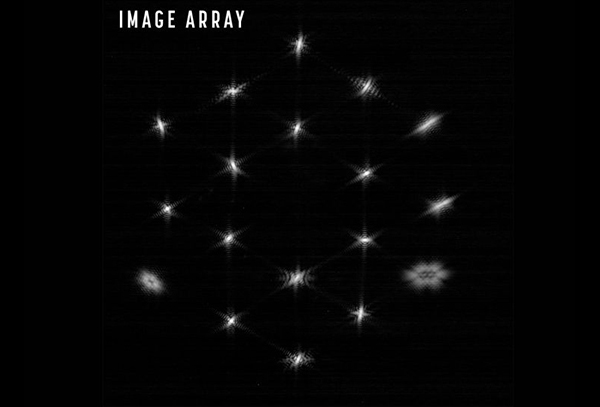

Saturn's hexagon is a persistent approximately hexagonal cloud pattern around the north pole of the planet Saturn, located at about 78°N. The sides of the hexagon are about 14,500 km (9,000 mi) long, which is about 2,000 km (1,200 mi) longer than the diameter of Earth. The hexagon may be a bit more than 29,000 km (18,000 mi) wide, may be 300 km (190 mi) high, and may be a jet stream made of atmospheric gases moving at 320 km/h (200 mph).
It rotates with a period of 10h 39m 24s, the same period as Saturn's radio emissions from its interior. The hexagon does not shift in longitude like other clouds in the visible atmosphere.
Saturn's polar hexagon was discovered by Dr. David Godfrey in 1987 from piecing together fly-by views from the 1981 Voyager mission,] and was revisited in 2006 by Cassini mission.
Cassini was able to take only thermal infrared images of the hexagon until it passed into sunlight in January 2009. Cassini was also able to take a video of the hexagonal weather pattern while traveling at the same speed as the planet, therefore recording only the movement of the hexagon.
After its discovery, and after it came back into the sunlight, amateur astronomers managed to get images showing the hexagon from Earth, even with modest-sized telescopes.
Between 2012 and 2016, the hexagon changed from a mostly blue color to more of a golden color. One theory for this is that sunlight is creating haze as the pole is exposed to sunlight due to the change in season. These changes were observed by the Cassini spacecraft.

Star twinkles 18 times to form hexagonal pattern in new James Webb telescope image
Science Alert - February 19, 2022